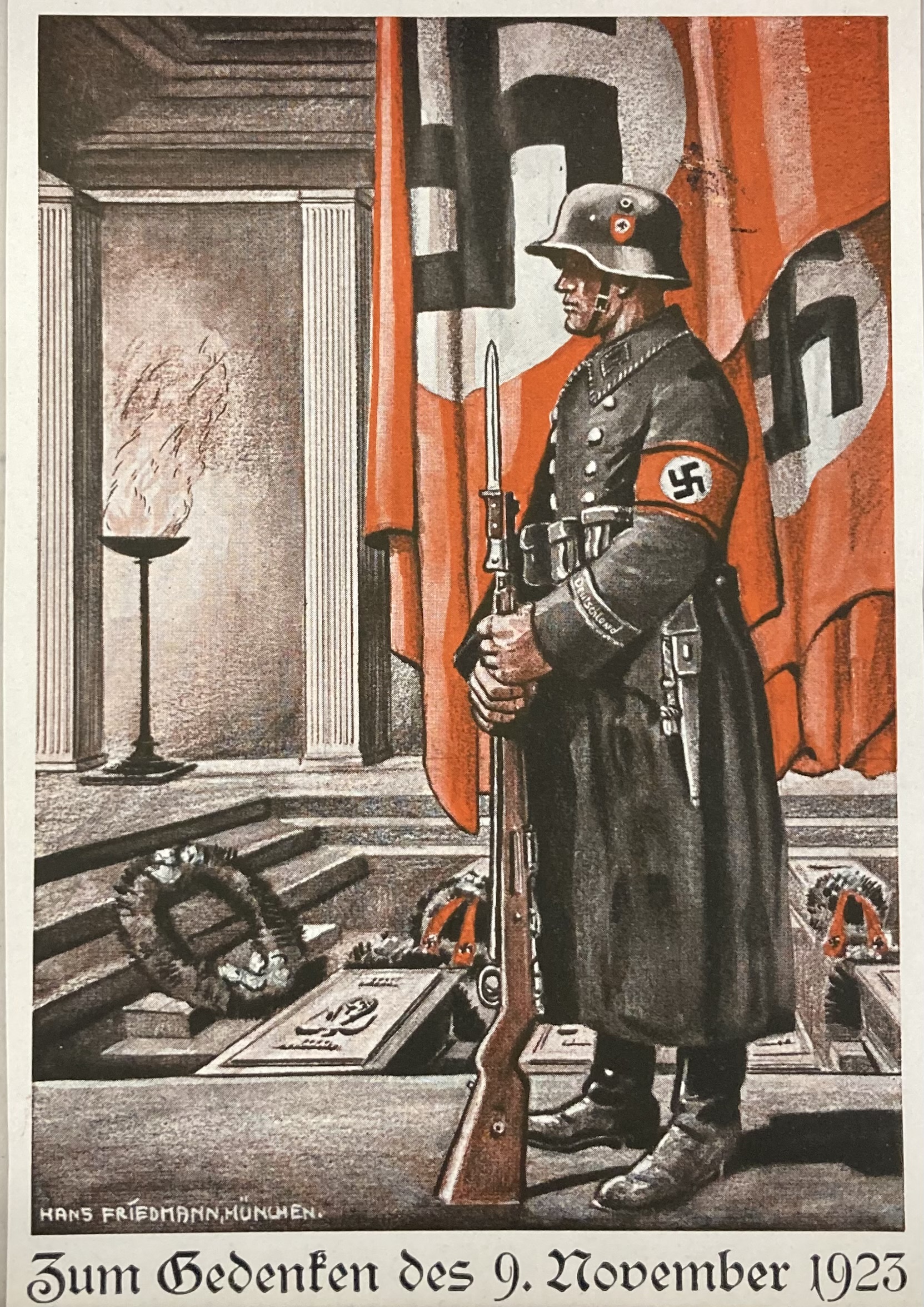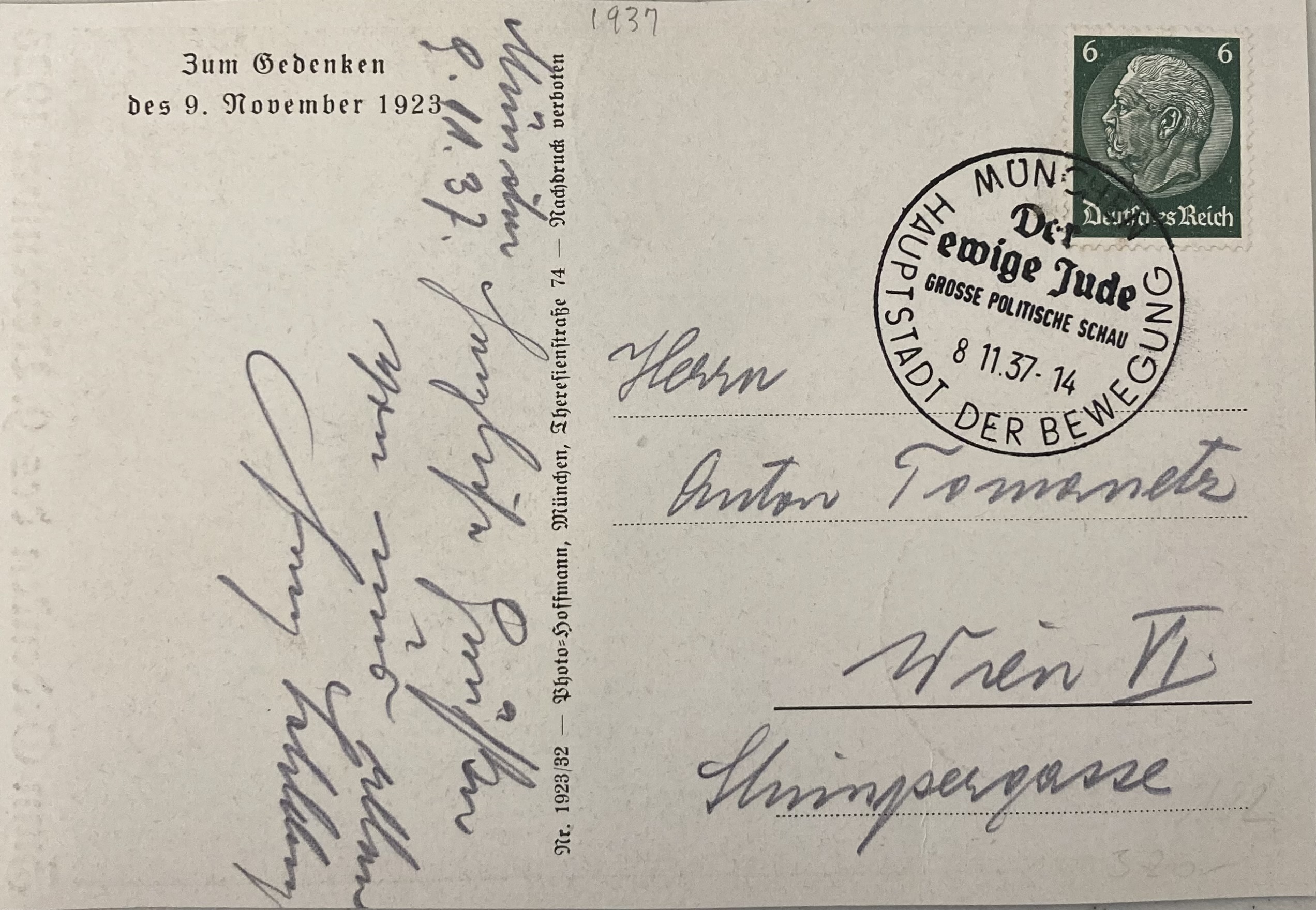Accession Number: 2022.02.4.47
Stamp: Paul Von Hindenburg medallion
Postmark: Promotional postmark for the “Eternal Jew” traveling exhibition in Munich
Artist: Hans Friedmann
Historical background:
The Beer Hall Putsch, also known as the Munich Putsch, was a failed coup d’état by the Nazi Party in Munich,Bavaria, on 8–9 November 1923, during the Weimar Republic. Approximately two thousand Nazis marched into the city center, but were confronted by police, which resulted in the deaths of 14 Nazi party members.
The putsch brought Hitler to the attention of the German nation for the first time and generated front-page headlines in newspapers around the world. His arrest was followed by a 24-day trial, which was widely publicized and gave him a platform to express his nationalist sentiments to the nation. Hitler was found guilty of treason and sentenced to five years in Landsberg Prison, where he dictated Mein Kampf to fellow prisoners Emil Maurice and Rudolf Hess. On 20 December 1924, having served only nine months, Hitler was released. Once released, Hitler redirected his focus towards obtaining power through legal means rather than by revolution or force, and accordingly changed his tactics, further developing Nazi propaganda.
The fourteen Nazis who died that day were seen as blood martyrs to the Nazi party. Hitler and the Nazi Party leadership cultivated the memory of the putsch. They gave it a special place in the narrative of the Nazi movement, and eventually in that of the German state. After Hitler consolidated power, Nazi Germany celebrated November 9 as Reich Day of Mourning.
The Odeonsplatz, the city square where the conspirators had clashed with police, became an important memorial for the Nazi Party. Only after World War II did authorities of the German Federal Republic dedicate a plaque memorializing the four police officers killed on duty in defense of the Weimar Republic.


